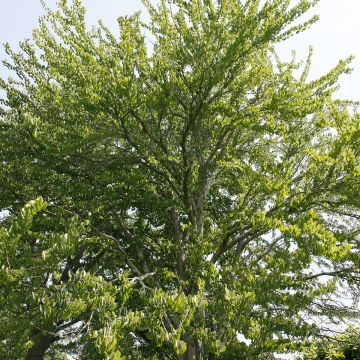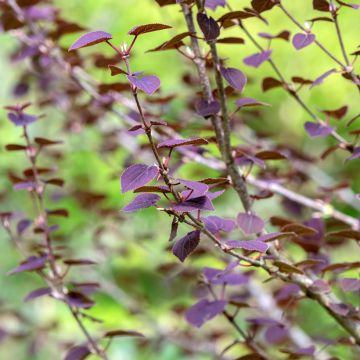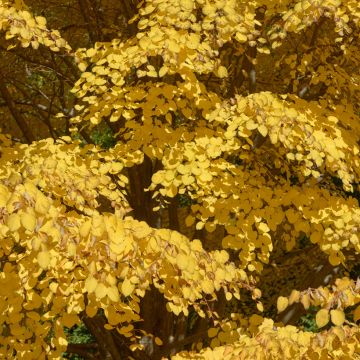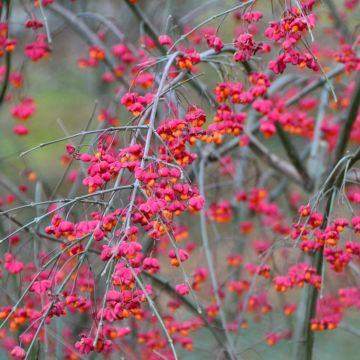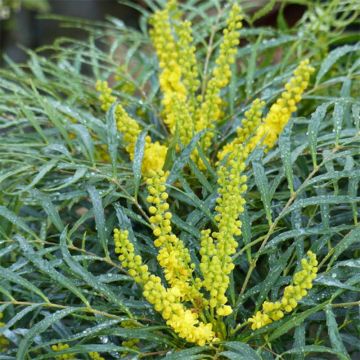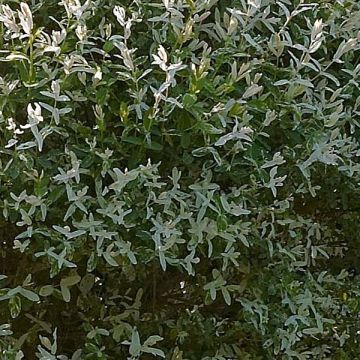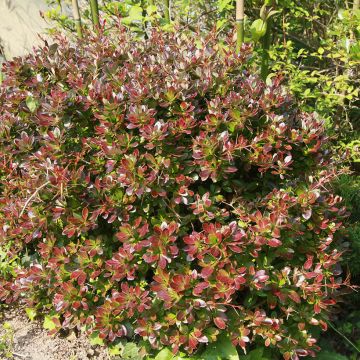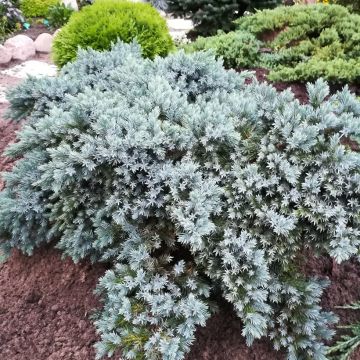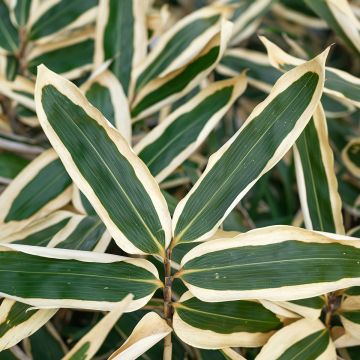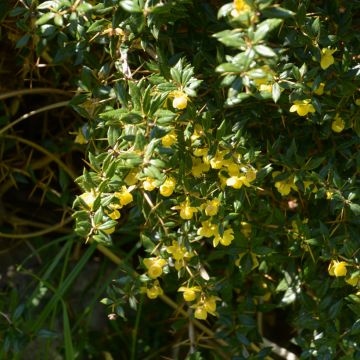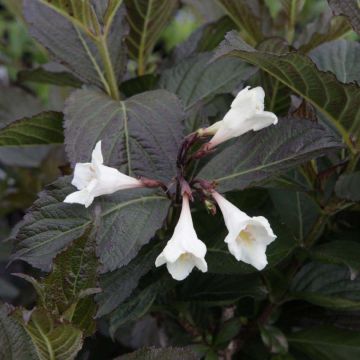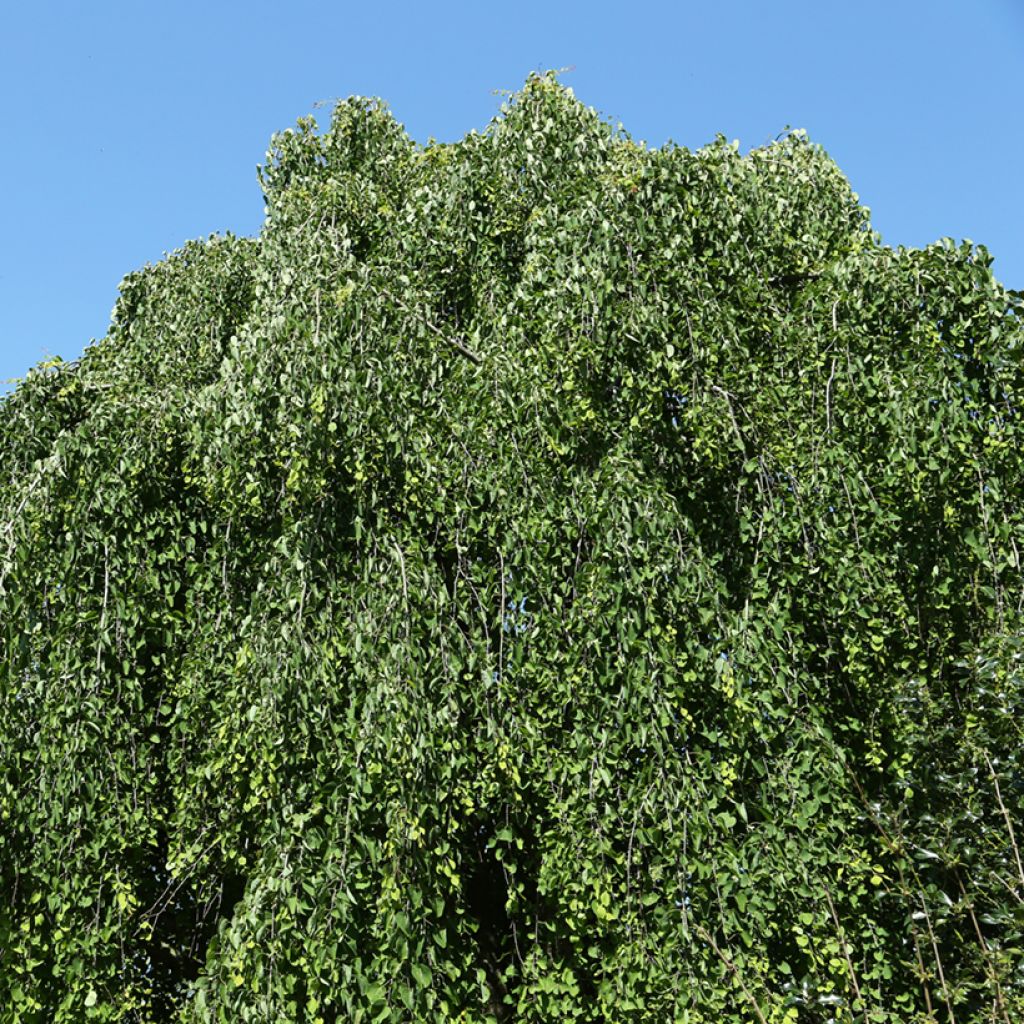

Cercidiphyllum japonicum Morioka Weeping - Katsura tree
Cercidiphyllum japonicum Morioka Weeping - Katsura tree
Cercidiphyllum japonicum Morioka Weeping
Katsura tree, Katsura
Special offer!
Receive a €20 voucher for any order over €90 (excluding delivery costs, credit notes, and plastic-free options)!
1- Add your favorite plants to your cart.
2- Once you have reached €90, confirm your order (you can even choose the delivery date!).
3- As soon as your order is shipped, you will receive an email containing your voucher code, valid for 3 months (90 days).
Your voucher is unique and can only be used once, for any order with a minimum value of €20, excluding delivery costs.
Can be combined with other current offers, non-divisible and non-refundable.
Home or relay delivery (depending on size and destination)
Schedule delivery date,
and select date in basket
This plant carries a 24 months recovery warranty
More information
We guarantee the quality of our plants for a full growing cycle, and will replace at our expense any plant that fails to recover under normal climatic and planting conditions.
Would this plant suit my garden?
Set up your Plantfit profile →
Description
Cercidiphyllum japonicum 'Morioka Weeping' is a rare variety of Caramel Tree with a weeping habit. It differs from the 'Pendulum' variety with its informal growth habit and larger, pleated leaves. The heart-shaped spring leaves are reddish-purple, which soften to a blue-green in summer. The autumn colours are a vibrant yellow with hints of orange and apricot. The tree grows upright when young and takes on a more strongly weeping form as it ages. It is during leaf drop that the Caramel Tree fills the air with a delicious sweet fragrance. The colour and growth are best in full sun.
Cercidiphyllums have their own family, closely related to magnolias, and comprise only one species, Cercidiphyllum japonicum. They are deciduous trees native to Japan and China, characterised by a forked trunk, horizontally spreading branches, and heart-shaped leaves. In our gardens, Cercidiphyllum japonicum forms a slender tree of only 12m in height, while in its native habitat, it is the tallest native deciduous tree, reaching up to 40m.
Cercidiphyllum japonicum 'Morioka Weeping' is a large weeping variety of the Caramel Tree, reaching heights of up to 20m and spreads of 12m. Its uniqueness lies in its graceful weeping and spreading habit. This tree has a wide, dome-shaped crown, often carried by several trunks with grey-brown bark that becomes wrinkled with age. Its branches are so pendulous that the trunk is usually hidden by the foliage. The appeal of the 'Morioka Weeping' Caramel Tree comes from its cascading habit and its foliage with vibrant and ever-changing colours, evolving throughout the seasons. In spring, it bears rounded leaves with slightly wavy edges, measuring 7 to 11 cm long. They are initially purple and turn bluish-green in summer, offering visual and olfactory delight to gardeners in autumn. In late season, the leaves blaze with shades ranging from yellow to purple, sometimes even mauve, and emit delicious scents of caramel or gingerbread. In late winter, Cercidiphyllum produces inconspicuous reddish flowers, followed by fruiting only on female trees, as the Caramel Tree is dioecious. These are small greenish-brown pods that contain winged seeds.
The Caramel Tree grows in wooded areas and along watercourses, preferring cool and slightly acidic soils where its growth is faster and its autumn colours are more vibrant. Plant it in a light, humus-bearing soil that is deeply loosened and well-drained, in a sheltered spot from cold and drying winds. In hot regions, it is best to plant it in shade to prevent premature leaf drop. Ideally, it should be planted near a body of water and will appreciate regular watering during the growing season. A thick layer of mulch will help maintain soil moisture in summer and protect the roots from the cold in winter, although it can withstand temperatures below -15°C. Pruning Cercidiphyllum japonicum 'Morioka Weeping' is not obligatory. However, you can remove dead branches at the end of winter to maintain a harmonious shape. Easy to cultivate, it has good disease resistance and will reveal its splendour without much difficulty! Planted as a specimen tree in the middle of a lawn, the 'Morioka Weeping' Cercidiphyllum brings life to any style of garden and adds a romantic touch to its surroundings for many months.
Report an error about the product description
Plant habit
Flowering
Foliage
Botanical data
Cercidiphyllum
japonicum
Morioka Weeping
Cercidiphyllaceae
Katsura tree, Katsura
Cultivar or hybrid
Other Cercidiphyllum
View all →Planting and care
Cercidiphyllum Japonicum Morioka Weeping prefers moist and well-drained soils. A slightly acidic soil will accelerate its growth and enhance the vibrancy of its autumn colours. In hot regions, it is important to choose a shaded location for it, otherwise its leaves may fall prematurely. Its placement should be carefully considered to avoid transplantation, as it is not well-tolerated.
It is very hardy and can withstand temperatures below -15°C. However, mulching will help retain soil moisture in summer and protect the roots from the cold in winter. During the growing season, the caramel tree requires regular watering if it is not planted in moist soil. Cercydiphyllum is disease-resistant and easy to grow.
Planting period
Intended location
Care
This item has not been reviewed yet - be the first to leave a review about it.
Similar products
Haven't found what you were looking for?
Hardiness is the lowest winter temperature a plant can endure without suffering serious damage or even dying. However, hardiness is affected by location (a sheltered area, such as a patio), protection (winter cover) and soil type (hardiness is improved by well-drained soil).

Photo Sharing Terms & Conditions
In order to encourage gardeners to interact and share their experiences, Promesse de fleurs offers various media enabling content to be uploaded onto its Site - in particular via the ‘Photo sharing’ module.
The User agrees to refrain from:
- Posting any content that is illegal, prejudicial, insulting, racist, inciteful to hatred, revisionist, contrary to public decency, that infringes on privacy or on the privacy rights of third parties, in particular the publicity rights of persons and goods, intellectual property rights, or the right to privacy.
- Submitting content on behalf of a third party;
- Impersonate the identity of a third party and/or publish any personal information about a third party;
In general, the User undertakes to refrain from any unethical behaviour.
All Content (in particular text, comments, files, images, photos, videos, creative works, etc.), which may be subject to property or intellectual property rights, image or other private rights, shall remain the property of the User, subject to the limited rights granted by the terms of the licence granted by Promesse de fleurs as stated below. Users are at liberty to publish or not to publish such Content on the Site, notably via the ‘Photo Sharing’ facility, and accept that this Content shall be made public and freely accessible, notably on the Internet.
Users further acknowledge, undertake to have ,and guarantee that they hold all necessary rights and permissions to publish such material on the Site, in particular with regard to the legislation in force pertaining to any privacy, property, intellectual property, image, or contractual rights, or rights of any other nature. By publishing such Content on the Site, Users acknowledge accepting full liability as publishers of the Content within the meaning of the law, and grant Promesse de fleurs, free of charge, an inclusive, worldwide licence for the said Content for the entire duration of its publication, including all reproduction, representation, up/downloading, displaying, performing, transmission, and storage rights.
Users also grant permission for their name to be linked to the Content and accept that this link may not always be made available.
By engaging in posting material, Users consent to their Content becoming automatically accessible on the Internet, in particular on other sites and/or blogs and/or web pages of the Promesse de fleurs site, including in particular social pages and the Promesse de fleurs catalogue.
Users may secure the removal of entrusted content free of charge by issuing a simple request via our contact form.
The flowering period indicated on our website applies to countries and regions located in USDA zone 8 (France, the United Kingdom, Ireland, the Netherlands, etc.)
It will vary according to where you live:
- In zones 9 to 10 (Italy, Spain, Greece, etc.), flowering will occur about 2 to 4 weeks earlier.
- In zones 6 to 7 (Germany, Poland, Slovenia, and lower mountainous regions), flowering will be delayed by 2 to 3 weeks.
- In zone 5 (Central Europe, Scandinavia), blooming will be delayed by 3 to 5 weeks.
In temperate climates, pruning of spring-flowering shrubs (forsythia, spireas, etc.) should be done just after flowering.
Pruning of summer-flowering shrubs (Indian Lilac, Perovskia, etc.) can be done in winter or spring.
In cold regions as well as with frost-sensitive plants, avoid pruning too early when severe frosts may still occur.
The planting period indicated on our website applies to countries and regions located in USDA zone 8 (France, United Kingdom, Ireland, Netherlands).
It will vary according to where you live:
- In Mediterranean zones (Marseille, Madrid, Milan, etc.), autumn and winter are the best planting periods.
- In continental zones (Strasbourg, Munich, Vienna, etc.), delay planting by 2 to 3 weeks in spring and bring it forward by 2 to 4 weeks in autumn.
- In mountainous regions (the Alps, Pyrenees, Carpathians, etc.), it is best to plant in late spring (May-June) or late summer (August-September).
The harvesting period indicated on our website applies to countries and regions in USDA zone 8 (France, England, Ireland, the Netherlands).
In colder areas (Scandinavia, Poland, Austria...) fruit and vegetable harvests are likely to be delayed by 3-4 weeks.
In warmer areas (Italy, Spain, Greece, etc.), harvesting will probably take place earlier, depending on weather conditions.
The sowing periods indicated on our website apply to countries and regions within USDA Zone 8 (France, UK, Ireland, Netherlands).
In colder areas (Scandinavia, Poland, Austria...), delay any outdoor sowing by 3-4 weeks, or sow under glass.
In warmer climes (Italy, Spain, Greece, etc.), bring outdoor sowing forward by a few weeks.






























